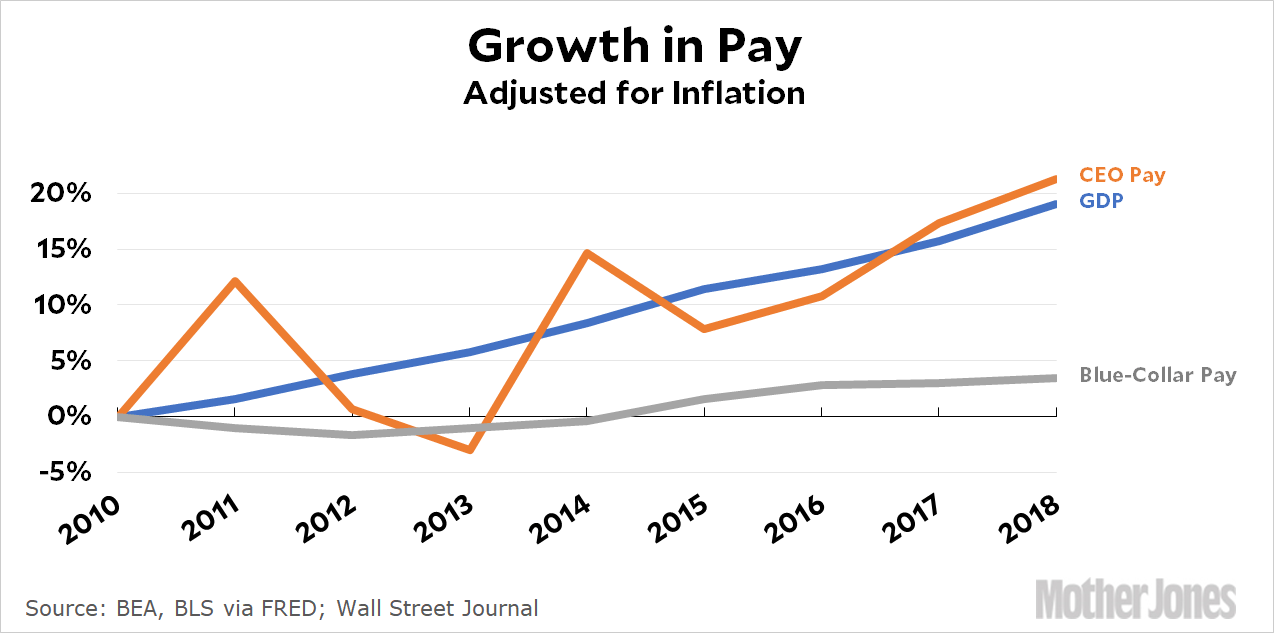The Wall Street Journal reports today on the big-company CEOs who made the most money in 2018. The big winner is David Zaslav, CEO of Discovery, whose TV channels are apparently doing pretty well. He raked in $129.4 million last year. The highest paid woman was Mary Barra of General Motors, who earned $21.9 million. This puts her in about 40th place.
Anyway, this seems like a good excuse to revisit CEO pay. Based on the Journal’s data, here it is from 2010 through 2018:

Adjusted for inflation, median CEO pay has increased by 21 percent since 2010. In other words, it’s pretty much tracked the growth in GDP. That might seem fair, but for some reason it doesn’t apply to the rest of us. Blue-collar workers have seen a pay increase of only 3.5 percent over the same period.
You might wonder why corporations are so willing to pay their CEOs big money for doing nothing but coasting along on an expanding economy, and you’d be right to wonder that. I’ve long thought that big-company CEO pay should be tightly tied to economic growth or something similar. If your company grows faster than the economy, then fine: you get a healthy raise for doing a great job. But if your company just grows at the same rate as the economy, why do you deserve anything more than a COLA increase? The company probably would have done just as well without you.
This is, of course, just another way of looking at wage stagnation for those of us who aren’t big-company executives. We’re looking at a period of only eight years, so it doesn’t matter much what inflation measure you use or whether you include fringe benefits or any other details. You’ll get the same results either way: Eight years of a steadily expanding economy and steadily declining unemployment has produced only the tiniest of pay raises for ordinary workers. This is why you should laugh at anyone who says ominously that worker pay is “starting to show signs” of acceleration. I should damn well hope so. If it accelerates for another decade or so it might make up a fraction of the ground it’s lost over the past decade.


















